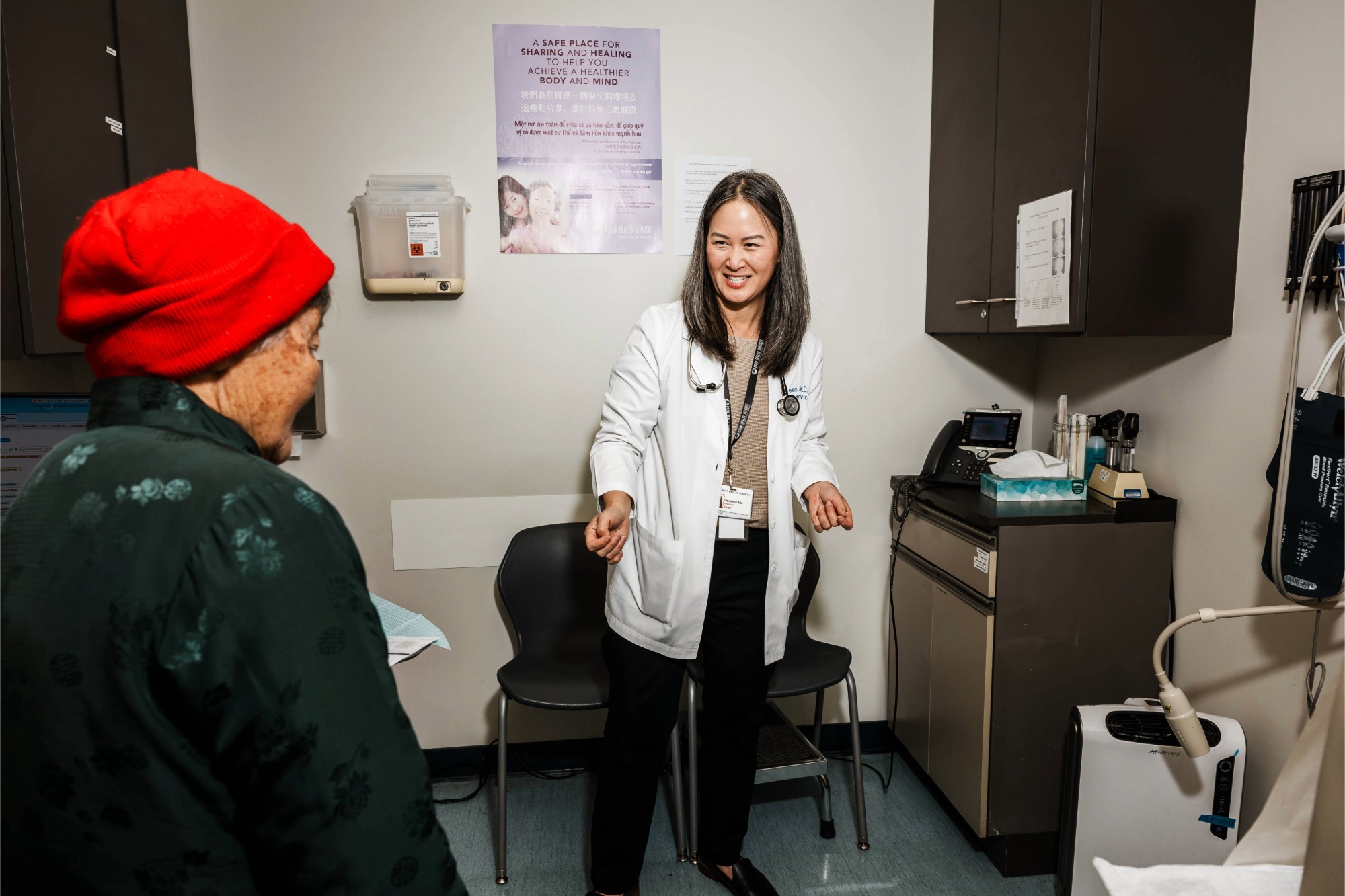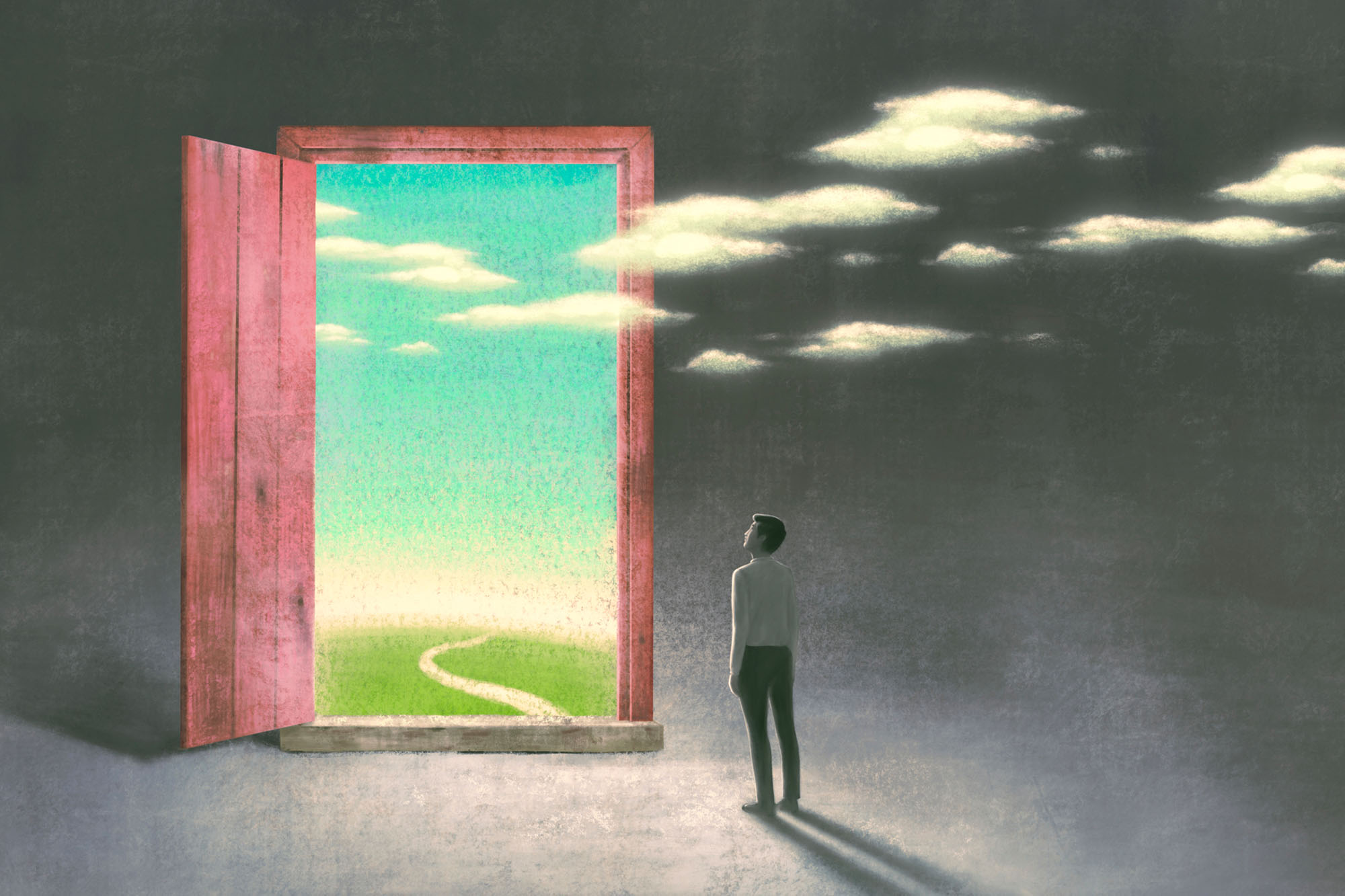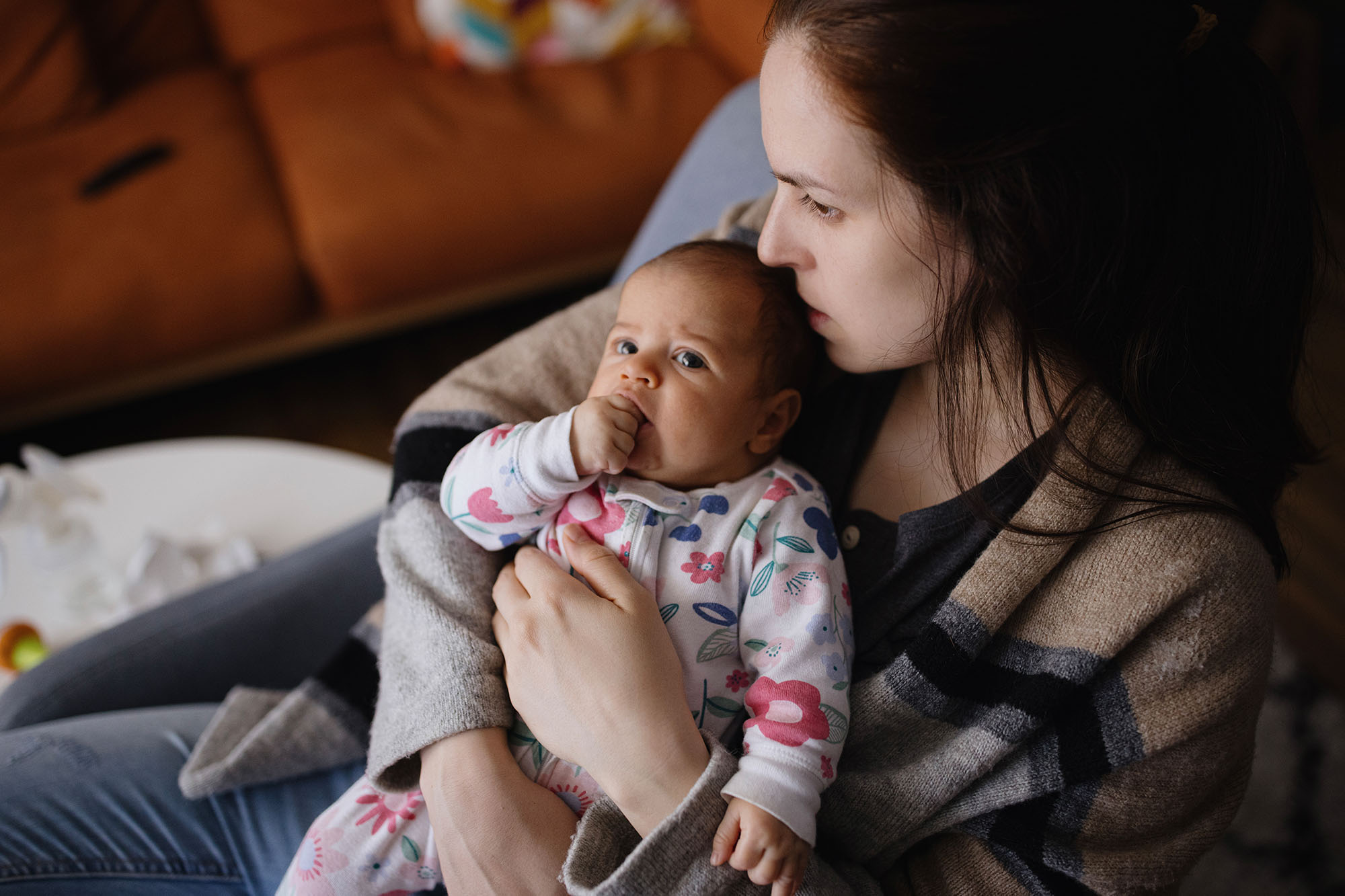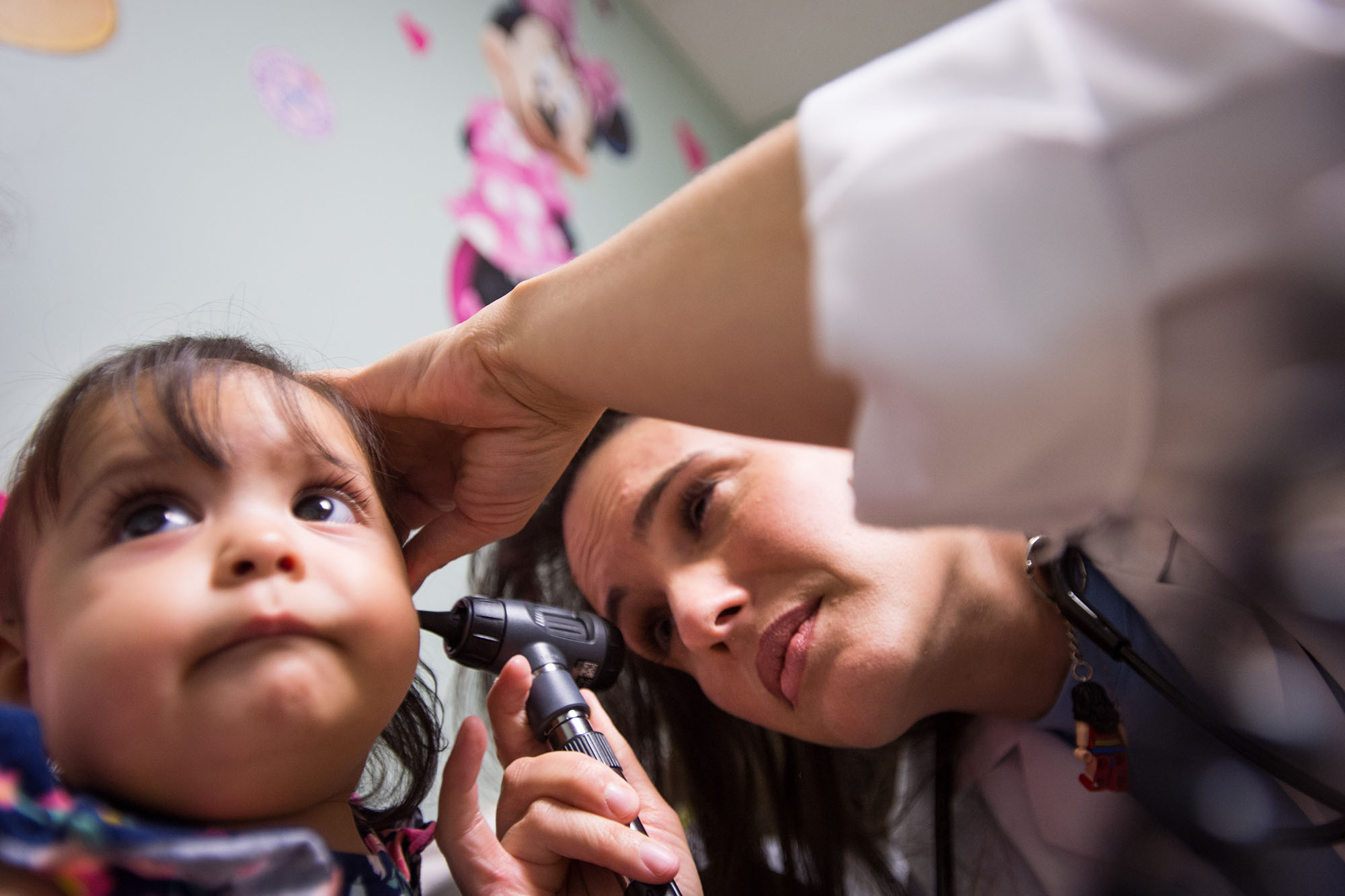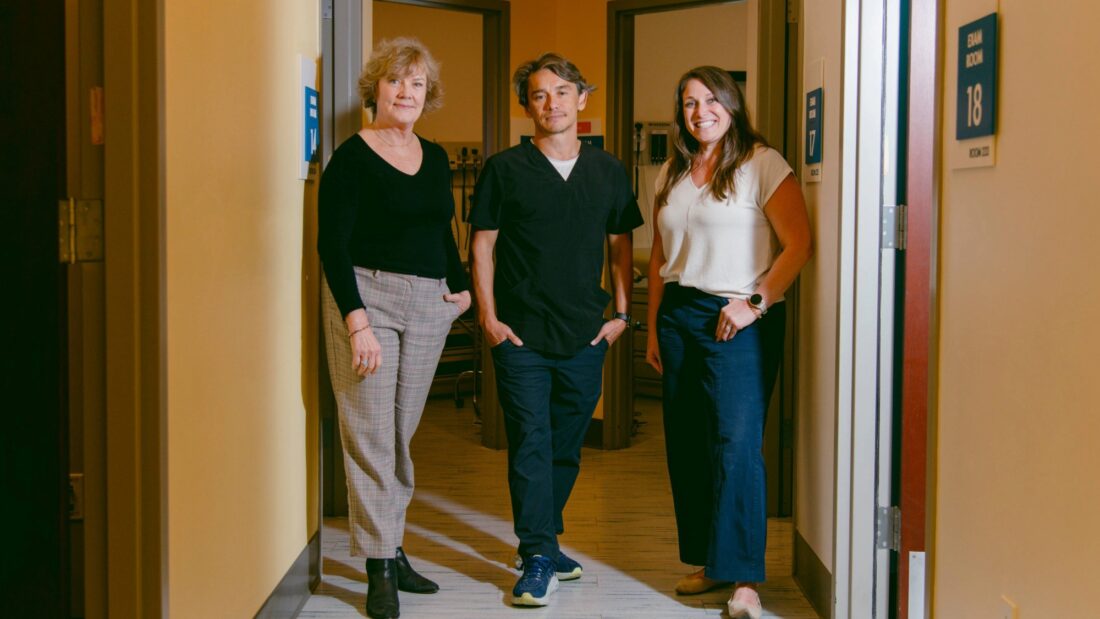
As a therapist at Venice Family Clinic, a federally qualified health center in Los Angeles, Iliniza “Nisa” Baty spends countless hours listening to patients recount harrowing life experiences with mental health issues and substance use disorders.
The stories are heartbreaking, and occasionally a patient says something that reminds Baty why she and her colleagues at the center have spent years integrating treatment for substance use disorder (SUD) into the clinic’s menu of primary care services.
“I guarantee you I would not be alive today if it weren’t for the support of Venice Family Clinic,” one patient recovering from SUD told her recently.
“Just hearing that every now and then, it’s beautiful,” said Baty, a licensed clinical social worker and director of the clinic’s behavioral health department. “We have patients who are suicidal, patients who have gone through incredible levels of complex trauma through their lifetimes … For folks to know that they can get the care that is lifesaving at Venice, it’s powerful.”
Substance use disorder is common, affecting about 1 in 6 people in the United States older than 12. Yet despite its prevalence, many never get treatment. That’s especially true in California, where more than 80% of individuals classified as needing substance use treatment in 2022 did not receive it, versus 76% nationally. Given their mission to serve people of all backgrounds regardless of ability to pay, health centers like Venice Family Clinic can offer an accessible entry point for patients to get SUD care. Most community health centers report they screen for substance use disorder, perform brief interventions, and provide referrals to outside services, but only 36% have fully integrated SUD services into primary care, according to the California Primary Care Association.
Integrating Treatment Into Primary Care
To understand why, the California Health Care Foundation hired health policy consulting firm Aurrera Health Group to investigate the barriers faced by community health centers endeavoring to integrate substance use treatment into primary care. The researchers reviewed the literature and data on substance use integration, and conducted 19 interviews with community clinic leaders, providers, Medi-Cal managed care plans, county behavioral health leaders, and other stakeholders. They also looked for examples of community health centers that have successfully provided comprehensive substance use support to their patients, identifying strategies to overcome common barriers.
“We hope that community health centers will see this research and see that substance use disorders are undertreated, treatable, and that they too can integrate substance use disorder treatment in their clinics,” said Diana Camacho, MPH, a senior program officer for CHCF’s Improving Access team, which works to strengthen coverage and care for Californians with low incomes. “They’ll find that other health centers are doing it and that there are resources to support them.”
Aurrera identified several systemic challenges that stymie community health centers’ ability to offer substance use treatment at the primary care level. Many community health centers reported that California’s system of assigning to county governments the responsibility for high-acuity behavioral health treatment leads to coordination gaps, siloed records systems, and patients falling through the cracks. Medi-Cal and Medicare reimbursement rules limit what types of services and providers that community health centers can bill for, making it difficult to fund effective comprehensive substance use interventions, the researchers found.
Another significant barrier found by Aurerra researchers Brianna Nielson and Allison Homewood was cultural. During their interviews, they heard how stigma around substance use deters patients from seeking help. Stigma makes primary care clinicians feel uncomfortable addressing substance use with their patients. Some providers also lack training on treatment options such as medication-assisted treatment, or they worry that if they screen patients for substance use, they won’t have the resources needed to help them.
“One of the things we heard again and again from providers at community health centers who have a lot of experience in addiction medicine is, from their perspective, SUD shouldn’t be treated any differently than any other specialty,” Nielson said. “A primary care provider knows how to support someone with diabetes even if they aren’t an endocrinologist. Primary care providers have the skills that they would need to support folks with SUD treatment: doing that early intervention, helping them navigate into treatment. The challenge is making providers feel comfortable with those skills.”
Bringing Behavioral Health Services Under One Roof
Community health centers that have succeeded in making substance use disorder identification and treatment part of primary care have tackled these difficulties on two levels. They have trained their physicians, mental health clinicians, and front desk staff in best practices for recognizing and responding to patients with substance use challenges. And they’ve created a variety of systems to support patients with SUD, including:
- Hiring substance-use counselors and peer support specialists to work with patients on-site
- Contracting with county behavioral health departments to provide a wider range of substance use services within the primary care system
- Developing robust referral procedures and relationships with outside providers who help ensure patients enroll in substance use care instead of just walking away with a referral phone number.
While there was no one-size-fits-all approach, each clinic found a way to pay for care beyond regular FQHC reimbursements such as through county contracts, by becoming certified behavioral health clinics, or through grants. This allowed them to add care navigators, peer specialists, and recovery counselors to their staff.
“Different clinics can do it differently,” said Homewood, managing principal of Medicaid & behavioral health policy with Aurrera. “People don’t need to feel like they need to solve all these big systemic and policy barriers to help someone who’s coming in with this need.”
Venice Family Clinic, which operates health centers, mobile clinics, and street medicine teams across Westside and South L.A., offers numerous SUD treatment options through its Substance Use, Motivation and Medication Integrated Treatment (SUMMIT) program. Patients can choose from medication assisted treatment, substance use-specific counseling, therapy, case management, and support groups. Some of this work is underwritten by funders, including a five-year grant from the federal Substance Abuse and Mental Health Services Administration, which helps pay for case management and substance use counseling, said Allison Coleman, LCSW, director of SUMMIT’s behavioral health section.
Same-Day Appointments for Treatment
Key to the program is ensuring that patients ready to receive assistance get screened and connected to treatment immediately. Front desk staff, primary care clinicians, and other providers can reach out to an on-call SUMMIT case manager to screen patients and schedule same-day appointments for treatment.
“As soon as we’re made aware of any patient opening up about willingness for support in the moment is when we jump in as much as we can,” Coleman said. “We don’t want to let them leave without connecting them to more services because that might be the only opportunity that we have. With some of the patients that we see, this truly is a life-or-death matter.”
Venice Family clinicians and staff receive training in engagement with patients experiencing substance use disorder and on harm reduction, which destigmatizes substance use and allows people to recover at their own pace. Primary care providers inclined to provide medication-assisted treatment can opt to shadow one of the Venice Family Clinic’s two physicians with certification in addiction medicine.
At CommuniCare+OLE, a network of 13 federally qualified health centers in Napa, Solano, and Yolo counties, patients are screened for substance use disorder as part of primary and dental care. Behavioral health clinicians are available at each site to meet with patients who screen positive, either in the exam room or in separate in-depth consultations. Every health center offers counseling, peer support, medication-assisted treatment, and referrals to intensive or residential treatment.
More extensive services are available to patients in Yolo County, where CommuniCare+OLE is the contracted Drug Medi-Cal provider. These include intensive outpatient, perinatal, and youth outpatient services. That means, for example, that patients can go to a primary care or dental appointment at the Hansen Family Health Center, then walk down the hallway to attend an outpatient SUD program. This makes it easier for patients to get care and facilitates coordination and communication among providers who separate operations, records, and billing systems for Drug Medi-Cal, said Hansen’s chief behavioral and community health officer, Sara Gavin, LMFT, LPCC.
“It’s a little bit of a giant workaround for our complicated system, and it’s necessary,” Gavin said. “Because if we want people to get better, people to get to the services, good health outcomes, and wellness for people, then we have to support them on the path to get there.”
Group SUD Counseling, Individual Follow-Up
Meanwhile, at Riverside University Health System, which operates 13 community health centers across Riverside County, a federal Behavioral Health Service Expansion award enabled the organization to provide group substance use counseling. The counselor who leads it also contacts patients with substance use issues and connects them to services, including higher levels of care.
Clinicians “are so used to working in silos,” said Heena Hemani, MS, the Riverside system’s behavioral health services administrator. “Having somebody who brings it all together and follows the patient and meets them where they are … is really helpful.”
For other community clinics interested in implementing substance-use treatment and referral programs, clinic leaders recommend finding champions within the organization who support it and can help communicate its importance. SUD is widespread, and patients need these services, they said.
“I really encourage people to see the change that can happen,” said Coleman. “It really is life-changing, and I think we do a disservice to be hesitant about that.”
Authors & Contributors

Claudia Boyd-Barrett
Independent journalist
Claudia Boyd-Barrett is a longtime journalist based in Southern California who writes regularly about health and social inequities.

Marissa Leshnov
Independent Photographer
Marissa Leshnov is a portrait and documentary photographer based in Los Angeles.

